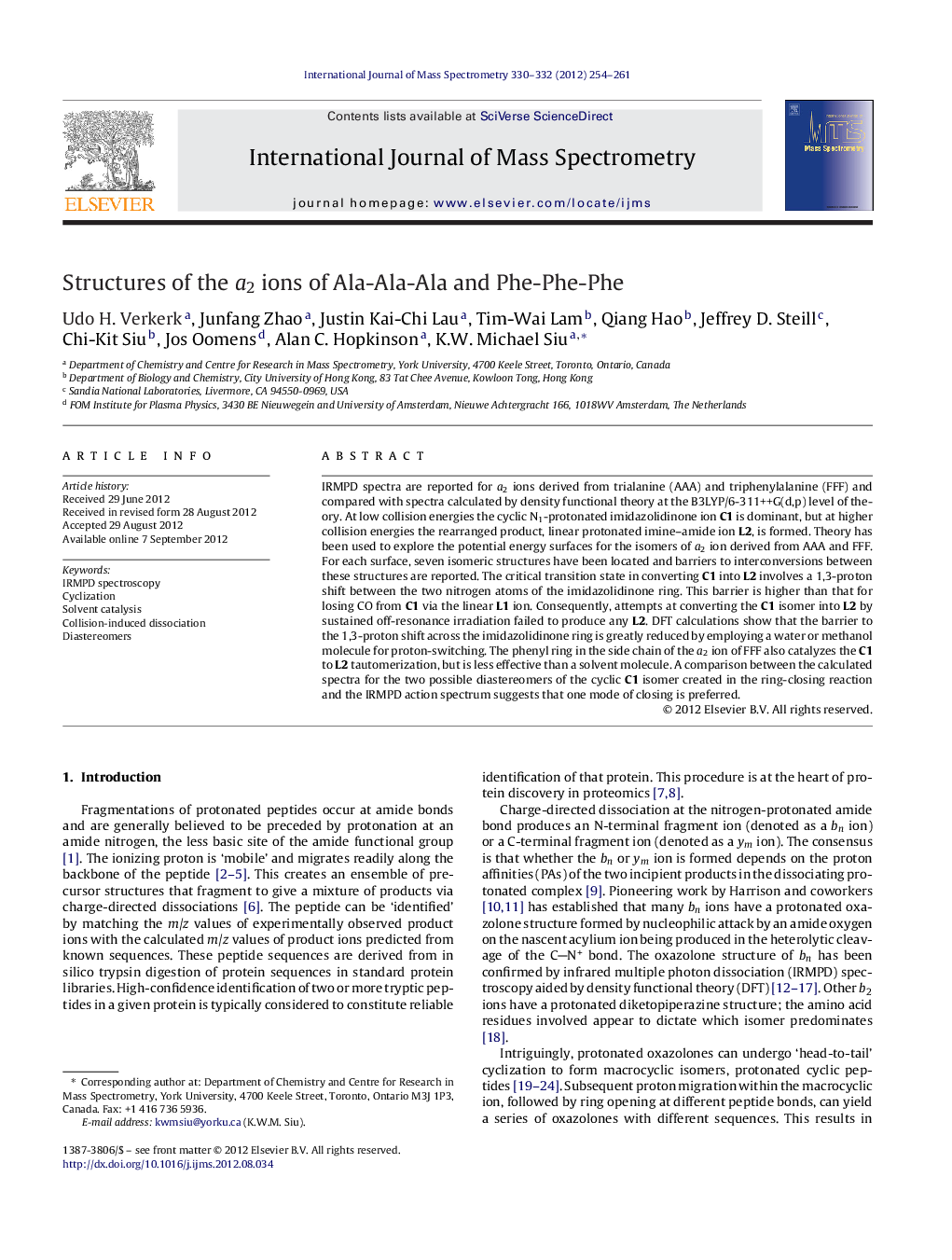| کد مقاله | کد نشریه | سال انتشار | مقاله انگلیسی | نسخه تمام متن |
|---|---|---|---|---|
| 1194253 | 1492288 | 2012 | 8 صفحه PDF | دانلود رایگان |

IRMPD spectra are reported for a2 ions derived from trialanine (AAA) and triphenylalanine (FFF) and compared with spectra calculated by density functional theory at the B3LYP/6-311++G(d,p) level of theory. At low collision energies the cyclic N1-protonated imidazolidinone ion C1 is dominant, but at higher collision energies the rearranged product, linear protonated imine–amide ion L2, is formed. Theory has been used to explore the potential energy surfaces for the isomers of a2 ion derived from AAA and FFF. For each surface, seven isomeric structures have been located and barriers to interconversions between these structures are reported. The critical transition state in converting C1 into L2 involves a 1,3-proton shift between the two nitrogen atoms of the imidazolidinone ring. This barrier is higher than that for losing CO from C1 via the linear L1 ion. Consequently, attempts at converting the C1 isomer into L2 by sustained off-resonance irradiation failed to produce any L2. DFT calculations show that the barrier to the 1,3-proton shift across the imidazolidinone ring is greatly reduced by employing a water or methanol molecule for proton-switching. The phenyl ring in the side chain of the a2 ion of FFF also catalyzes the C1 to L2 tautomerization, but is less effective than a solvent molecule. A comparison between the calculated spectra for the two possible diastereomers of the cyclic C1 isomer created in the ring-closing reaction and the IRMPD action spectrum suggests that one mode of closing is preferred.
Figure optionsDownload high-quality image (114 K)Download as PowerPoint slideHighlights
► IRMPD spectra of a2 ions of Ala-Ala-Ala and Phe-Phe-Phe are reported.
► Two isomeric a2 ions, a cyclic imidazolidinone and a linear imine–amide, are observed, with relative abundances depending on the front end collision energy.
► DFT calculations show that the highest barrier to rearrangement of the a2 ions is for a 1,3-proton shift across the imidazolidinone ring.
► The barrier to the 1,3-proton shift is substantially reduced by neutral solvent acting as proton shuttle.
Journal: International Journal of Mass Spectrometry - Volumes 330–332, 15 December 2012, Pages 254–261